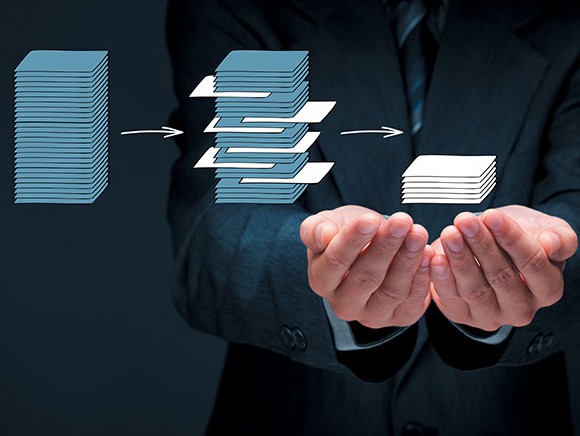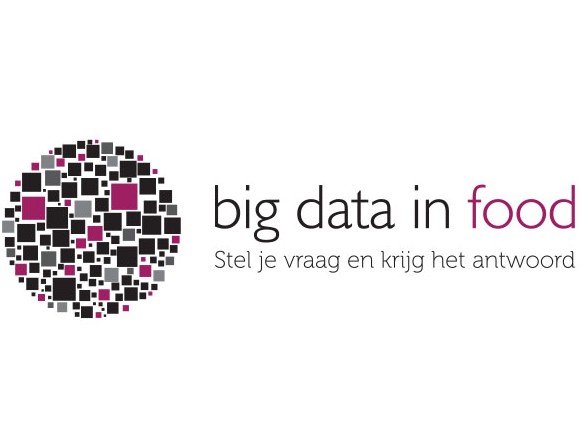
Big Data, the Internet of Things, Smart Industry: the digital transformation offers countless opportunities for the food sector – but only if you can get the bits and bytes to ‘talk’ to you. Otherwise the ‘great unknown’ continues to lead by 1-0. Wallbrink Crossmedia and B2B Communications are responding to this need and helping the food industry to unlock the secrets of big data in food.
In a themed update on statistics and trends published in February, Rabobank identified big data as the game changer that will disrupt the foodservice market. At around the same time, ABN Amro released its report entitled ‘Voedsel wordt bits en bytes’ (‘Food becomes bits and bytes’). Increased digitisation and the effects it is having on society as a whole is a hot topic for countless trendwatchers. In other words: for people in the food industry, there’s no escaping the fact their sector is also becoming increasingly data-driven. Saskia Stender: “Many companies know that digitisation is high on the agenda but they don’t know how to actually capitalise on all the bits and bytes. We wanted to do something to help them.”
How can digitisation reveal new customer needs, strengthen loyalty, help to build a closer relationship or generate new clients? “As a food company, if you want to be able to to capture, decipher and interpret the huge amounts of available data in real time, you have to invest in techniques and applications that enable you to do so,” states Rabobank. The good news is that the investment doesn’t necessarily have to be a big one, because Wallbrink Crossmedia and B2B Communications are collaborating with Left Loyalty BV to analyse big data in food. “Major corporations have invested millions in being able to interpret their big data,” says Saskia. “We’ll be offering access to our portal at a fraction of the price charged by current suppliers. People can find more details about the opportunities on our website.”
‘For the answer to your question’
Alex Schoone from Left Loyalty BV: “Most companies collect and store a wealth of digital information without realising it: who the visitors to their website are, for example, as well as what they click on and their click-through behaviour. That generates important data that is hardly ever used. Our software goes beyond merely providing a helicopter view; we have the technological possibilities to gather and unlock even more data in real time. This can be combined with an ERP or CRM system; think of sales, intention per product and so on. We can use it to uncover new, unexpected correlations and links and to predict patterns. It can also be interesting to zoom in on predictive models, clusters and intentions. This makes it possible to forecast who is going to buy what and when.”
John Wallbrink adds: “Every company uses LinkedIn, Facebook, Twitter, Google Analytics and their own newsletters. We connect together the dashboards of all those systems and other publicly available data. We can even include the company’s own CRM system. Then, from a single dashboard, you can manage, analyse and monitor all your data on www.BigDataInFood.com. You can use your analysis to set up targeted campaigns, further develop your products or improve your efficiency. You can also ask questions tailored to your own business through the portal. This is an easy way of unearthing the data that really matters.”
Saskia: “Thanks to the predictions and analysis that roll out of BigDataInFood.com, companies will be better equipped to estimate future demand, improve the level of customer satisfaction, increase the efficiency of their production process, reduce waste...the possibilities are endless because it’s customised. A carefully thought-out and well-executed digital strategy is expected to become a decisive success factor. We’re going to help the food processing sector in that context with BigDataInFood.com.”
Food safety is a well-established term in the industry, but what about digital safety? Just as with food safety, transparency is essential; be open and honest about which data you are using and how, and be especially careful with personal data. Research has shown that if customers can benefit financially they are usually happy to cooperate. “Of course, actually doing something with the predictions and analysis requires human involvement,” points out Saskia realistically. “It’s up to you to decide when you take action and who you want to target. But now, the big difference is that you can make sound decisions based on statistical analysis and real-time data.”

‘A carefully thought-out and well-executed digital strategy will be a decisive success factor’
Are you struggling to navigate a path through all the bits and bytes? Do you want to find out how unlocking the secrets of big data can really help your company in practice? Over the course of this year we’re organising a number of workshops especially for food industry companies.
Interested? Sign up now and we’ll keep you up to date!
www.BigDataInFood.com
Source: ©Jirsak/Shutterstock.com